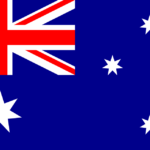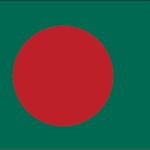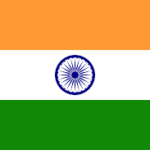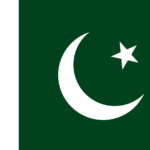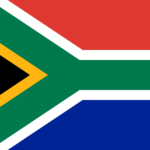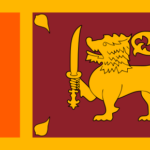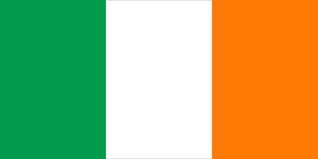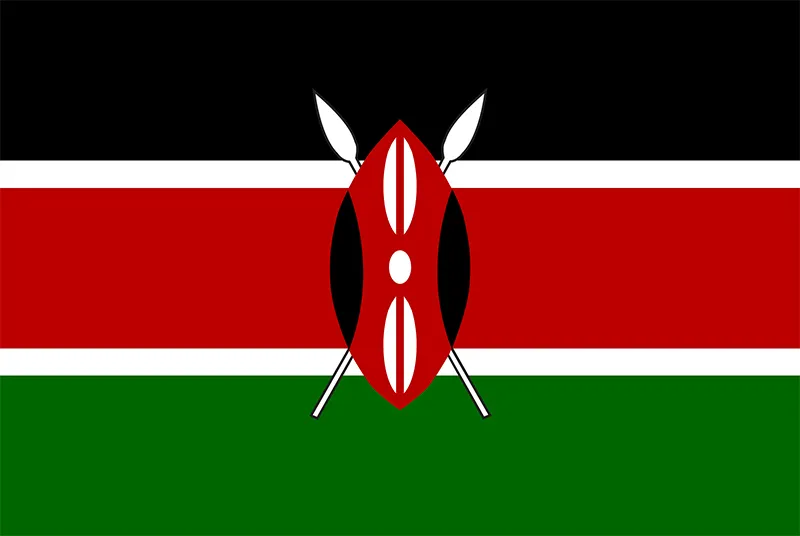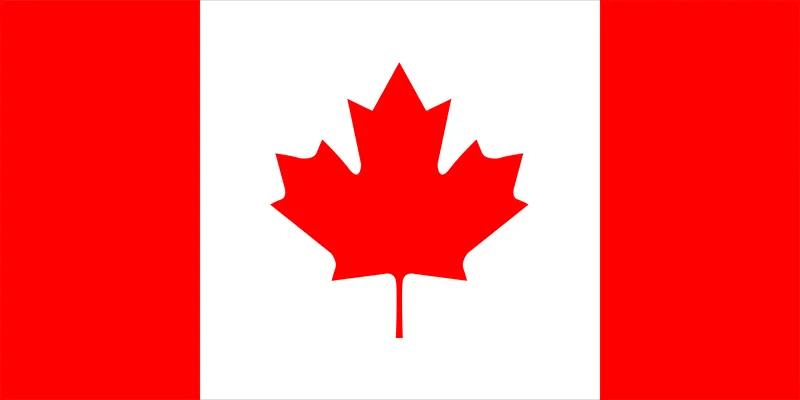The Zimbabwe men's national cricket team, also known as the Chevrons, represents Zimbabwe in men's international cricket and is overseen by Zimbabwe Cricket (formerly known as the Zimbabwe Cricket Union). Zimbabwe has been a Full Member of the International Cricket Council (ICC) since 1992. As of May, 2023, Zimbabwe is currently ranked 10th in Tests, 11th in One Day Internationals (ODIs) and 11th in Twenty20 internationals (T20Is) by the ICC.[3] History Before Test status Main article: History of cricket in Rhodesia and Zimbabwe to 1992 Main article: Rhodesia cricket team Zimbabwe – known as Rhodesia until 1980 – had a national cricket team before it achieved Test status. A summary of key moments: Rhodesia was represented in the South African domestic cricket tournament, the Currie Cup, sporadically from 1904 to 1932, and then regularly from 1946 until independence. Following independence, the country began to play more international cricket. On 21 July 1981, Zimbabwe became an associate member of the ICC. Zimbabwe participated in the 1983 Cricket World Cup, as well as the 1987 and 1992 events.[10] Zimbabwe's first World Cup campaign in 1983 ended in the group stage, as they lost five of their six matches. However, they threw a surprise against Australia. Batting first, Zimbabwe reached a total of 239 for 6 in the allotted 60 overs, with skipper Duncan Fletcher top-scoring with 69 not out. Fletcher then produced career-best figures of 4 for 42 to restrict Australia to 226 for 7, thereby recording a stunning upset in cricket history.[11] In the 1987 World Cup, Zimbabwe lost all six of their group-stage matches, though they came very close to winning against New Zealand. Chasing 243 to win from 50 overs, wicketkeeper-batsman David Houghton scored 142, but Zimbabwe were all out for 239 in the final over, thus losing by three runs.[12] In the 1992 tournament, Zimbabwe failed to progress beyond the round-robin stage, losing seven of their eight matches, though there were two notable achievements. Against Sri Lanka in their first match, Zimbabwe posted their then-highest total of 312 for 4, with wicketkeeper-batsman Andy Flower top-scoring with 115 not out. However, the Sri Lankans chased this total down with four balls to spare, winning by three wickets.[13] In their final match, Zimbabwe faced England in an inconsequential encounter, England having already made the semi-finals. Batting first, Zimbabwe were all out for 134. Eddo Brandes then produced a stunning spell of 4 for 21, including dismissing Graham Gooch the first ball, to help restrict England to 125 all out and thus give Zimbabwe a shock nine-run victory. These twenty World Cup matches were Zimbabwe's only international games during this period.[14] 1992–1996: early years of Test status Zimbabwe was granted Test status by the ICC in July 1992 and played its first Test match in October that year, against India at Harare Sports Club. They became the ninth Test nation.[15] Zimbabwe's early Test performances were consistently weak, leading to suggestions that they had been granted Test status prematurely. Of their first 30 Test matches, they won just one, at home against Pakistan in early 1995. In the one-day arena, however, the team soon became competitive, if not particularly strong. In particular, world respect was gained for their fielding ability. 1997–2002: the golden era Old logo of the Zimbabwe Cricket Union Despite his team's difficulties, wicket-keeper/batsman Andy Flower was at one point rated the best batsman in world cricket. During this era, Zimbabwe also produced such cricketers as Flower's brother Grant, and allrounders Andy Blignaut and Heath Streak (who was later appointed national captain). Murray Goodwin was also a world-class batsman; following his retirement from international cricket, he has scored heavily for Sussex. Another world-class batsman was David Houghton, who holds the record for the highest individual Test score for Zimbabwe of 266 against Sri Lanka in 1994/95. Sometime captain and middle-order batsman Alistair Campbell, leg-spinning all-rounder Paul Strang, Eddo Brandes, and pace bowler/opener Neil Johnson were other important contributors for Zimbabwe on the world stage at this time. With the appearance of these quality players, a breakthrough was achieved in levels of performance in the late 1990s where the Zimbabwean team began winning Tests against other nations, which included a series win against Pakistan. Unfortunately, the political situation in Zimbabwe declined at around the same time, which had a detrimental effect on the national team's performances. Zimbabwe performed well at the 1999 Cricket World Cup, coming in fifth place in the Super Sixes and only missing out on a semi-final place due to having an inferior net run-rate than New Zealand. In the group stage, Zimbabwe beat India by three runs,[16] before facing their neighbours South Africa, then the best team in the world. Batting first, Zimbabwe made 233 for 6, with a well-fought 76 by opening batsman Neil Johnson. In reply, South Africa collapsed to 40 for 6, before Lance Klusener and Shaun Pollock scored half-centuries to reduce the margin of defeat to 48 runs. This was South Africa's first defeat against Zimbabwe and one of Zimbabwe's most famous wins. Neil Johnson also excelled with the ball, taking three wickets and claiming the Man of the Match award. Johnson quit playing for Zimbabwe after this tournament. During this period, Zimbabwe beat all Test-playing nations (except Australia) regularly in ODI series. Zimbabwe beat New Zealand both home and away in 2000–2001. The team also reached the finals of many multi-national one-day tournaments. 2003–2004: signs of decline The increasing politicization of cricket, including selectorial policy, along with the declining situation in Zimbabwe disrupted the 2003 Cricket World Cup, which was jointly hosted by Zimbabwe, Kenya and South Africa. England forfeited a match scheduled to be played in Zimbabwe, risking their own progress through the competition, citing "security concerns" as their reason. Zimbabwean players Andy Flower and fast bowler Henry Olonga wore black armbands, for "mourning the death of democracy" in Zimbabwe. Both were immediately dismissed from the team and applied for political asylum overseas. This public political protest caused considerable embarrassment to the co-hosts and disrupted team harmony.[17][18] Since the 2003 World Cup, with a succession of Zimbabwe's best players ending their international careers early, a new side began to develop, featuring the likes of Travis Friend, Andy Blignaut, Hamilton Masakadza, Douglas Hondo, Craig Wishart, Ray Price, Sean Ervine, Mark Vermeulen, Tatenda Taibu, Elton Chigumbura, Prosper Utseya, Dougie Marillier, and Barney Rogers. Whilst not of the same caliber of Streak, Goodwin, and the Flower brothers, this new breed of predominantly multi-disciplined players formed a solid backbone to a competitive, if usually unsuccessful, side. In late 2003, Zimbabwe toured Australia in a two-match series. The series was more memorable for Australian opener Matthew Hayden's innings in the first Test – in which he overcame a back strain to score a then record 380 runs – than for the Zimbabwean performance.[19] Zimbabwe lost its first match against Bangladesh in 2004. In 2004, captain Heath Streak was sacked by the ZCU (now Zimbabwe Cricket), prompting a walkout by 14 other players in protest against political influence in the team's management and selection policies. A scheduled tour by Sri Lanka went ahead, but this was a lopsided affair, with Zimbabwe represented by fringe players who were not of international standard.[20][21] Because of this, the ZCU accepted that Zimbabwe was to play no further Test cricket in 2004, though its status as a Test nation was unaffected.[22] 2005–2009: worsening political situation, steep decline and the exodus of players After a series of poor Test performances following the resignation of several senior players, the Zimbabwean team was voluntarily suspended from Test cricket in late 2005 by its cricket board, with ICC encouragement.[23] In early 2005, Heath Streak was reinstated into the national side, but the political situation in Zimbabwe involving Operation Murambatsvina disrupted the Zimbabwean team. During overseas tours, the players were often said to be buying necessities that were unavailable – or prohibitively expensive – at home, as opposed to the souvenirs which other touring teams would purchase. In 2005 an agreement was signed which led to the return of many of the rebels to the Zimbabwe side.[24] However, results failed to improve as in March Zimbabwe lost both their Tests on tour against South Africa by an innings. Worse was to follow in August, when they were crushed on home soil by New Zealand, in a match that was completed in just two days. In the process, Zimbabwe was humiliated; they became only the second side in Test history (after India in 1952) to be bowled out twice in the space of one day. Then they lost both their Tests to India at home later in September. After the series against India, Streak announced his retirement from international cricket, dealing yet another blow to the beleaguered team. By November 2005, the players were once again in dispute with Zimbabwe Cricket over political interference in the management of the game, as well as contract negotiations, and the new captain, Tatenda Taibu, resigned from international cricket. By then the team had been further weakened by the departure of the likes of Dougie Marillier, Craig Wishart and Sean Ervine, all of whom retired in protest and expressed disillusionment in the local cricket hierarchy.
- Covid-19
- Entertainment
- Business
- Reality Show
- Big Boss
- Big Boss Season 18
- Bigg Boss Season 17
- Big Boss Season 17
- Big Boss Season 16
- Big Boss Season 15
- Big Boss Season 14
- Big Boss Season 13
- Big Boss Season 12
- Big Boss Season 11
- Big Boss Season 10
- Big Boss Season 9
- Big Boss Season 8
- Big Boss Season 7
- Big Boss Season 6
- Big Boss Season 5
- Big Boss Season 4
- Big Boss Season 3
- Big Boss Season 2
- Big Boss Season 1
- Dance Plus
- Drama Company
- India’s Best Dancer
- India Banega Manch
- Indian Idol
- India’s Laughter Champion
- Khatron Ke Khiladi
- Khatron Ke Khiladi Season 14
- Khatron Ke Khiladi Season 13
- Khatron Ke Khiladi Season 12
- Khatron Ke Khiladi Season 11
- KKK Made in india
- Khatron Ke Khiladi Season 10
- Khatron Ke Khiladi Season 9
- Khatron Ke Khiladi Season 8
- Khatron Ke Khiladi Season 7
- Khatron Ke Khiladi Season 6
- Khatron Ke Khiladi Season 5
- Khatron Ke Khiladi Season 4
- Khatron Ke Khiladi Season 3
- Khatron Ke Khiladi Season 2
- Khatron Ke Khiladi Season 1
- Rising Star
- Sabse Bada Kalakar
- Shark Tank
- Super Dancer
- The Great Indian Laughter Challenge
- Indian Idol
- Big Boss
- Technology
- Auto
- Life style
- Sports
- Politics
- Videos
- Movies
- Covid-19
- Entertainment
- Business
- Reality Show
- Big Boss
- Big Boss Season 18
- Bigg Boss Season 17
- Big Boss Season 17
- Big Boss Season 16
- Big Boss Season 15
- Big Boss Season 14
- Big Boss Season 13
- Big Boss Season 12
- Big Boss Season 11
- Big Boss Season 10
- Big Boss Season 9
- Big Boss Season 8
- Big Boss Season 7
- Big Boss Season 6
- Big Boss Season 5
- Big Boss Season 4
- Big Boss Season 3
- Big Boss Season 2
- Big Boss Season 1
- Dance Plus
- Drama Company
- India’s Best Dancer
- India Banega Manch
- Indian Idol
- India’s Laughter Champion
- Khatron Ke Khiladi
- Khatron Ke Khiladi Season 14
- Khatron Ke Khiladi Season 13
- Khatron Ke Khiladi Season 12
- Khatron Ke Khiladi Season 11
- KKK Made in india
- Khatron Ke Khiladi Season 10
- Khatron Ke Khiladi Season 9
- Khatron Ke Khiladi Season 8
- Khatron Ke Khiladi Season 7
- Khatron Ke Khiladi Season 6
- Khatron Ke Khiladi Season 5
- Khatron Ke Khiladi Season 4
- Khatron Ke Khiladi Season 3
- Khatron Ke Khiladi Season 2
- Khatron Ke Khiladi Season 1
- Rising Star
- Sabse Bada Kalakar
- Shark Tank
- Super Dancer
- The Great Indian Laughter Challenge
- Indian Idol
- Big Boss
- Technology
- Auto
- Life style
- Sports
- Politics
- Videos
- Movies


